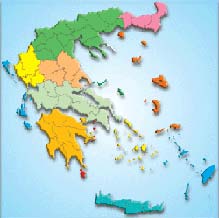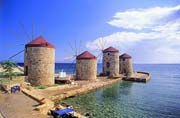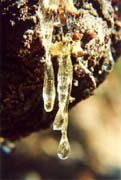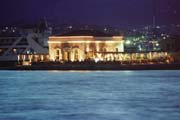
Please click on the map,
the region you want to visit |
|
|
|
|
| |
|
 |
Tourist Guide of Chios |
|
 CHIOS CHIOS
The home of the aromatic mastic tree with its medieval
villages built from local stone, its archaeological
sites, reknowned monasteries and hospitable residents
attracts thousands of visitors each year.
 The
capital and the port of the island is Chios town
where old and new buildings intermingle harmoniously.
The Justiniani Palace is a must as is the Municipal
Library, the Myloi (windmills), the Kampos, and
the Philip Argenti Musuem. If you visit Chios during
Christmas you'll enjoy local traditions with the
AgioBasiliatika (St. Basil's) boats and the celebrations
on New Year's Eve. The
capital and the port of the island is Chios town
where old and new buildings intermingle harmoniously.
The Justiniani Palace is a must as is the Municipal
Library, the Myloi (windmills), the Kampos, and
the Philip Argenti Musuem. If you visit Chios during
Christmas you'll enjoy local traditions with the
AgioBasiliatika (St. Basil's) boats and the celebrations
on New Year's Eve.
In the summer the beaches of Chios town are just
fine for swimming as well as those further south
towards Karfas.
 You'll
discover therapeutic springs with sulfur water at
the seaside village of Agiasmata. You'll
discover therapeutic springs with sulfur water at
the seaside village of Agiasmata.
At Agio Gala there is an impressive cave with the
Church of Panagias Agiogasoulainas built in the
entrance.
Anavatos is the Mystras of Chios with its medieval
castle fortress built on the top of a pine-covered
granite hill. Visit the large village Volissos for
its romantic atmosphere and to visit the Moni Agia
Markella Poliouxou. The village beach is close by.
Kardamyla is the home of many ship-owners and sailors.
It's worth a visit to the wetlands, the Naval Museum,
the Ravine and the Castle of Campion.
Karyies is known for its springs, its climate and
aromatic herbs, and the celebration of Zoodochou
Pigis held the Friday after Easter.
At Mesta the perfectly preserved houses are a fine
example of fortification building where the houses
are built to form a protective wall.  You'll
have a wonderful time if you visit Mesta during
Apokries (Carnival) where the ancient tradition
of "Aga" is re-enacted. You'll
have a wonderful time if you visit Mesta during
Apokries (Carnival) where the ancient tradition
of "Aga" is re-enacted.
Pyrgi is a traditional village called the "painted
village" for its unique "etchings"
that decorate the house fronts. On the 15th of August
(Celebration of the Panagia - Virgin Mary) people
gather to dance the traditional "Pyrgousikos"
dance.
The beautiful village of Sidirountas with its stone
houses features a folk art museum in the restored
olive mill, with ceramic household items, the old
equipment from the mill and Byzantine icons. |
|
|